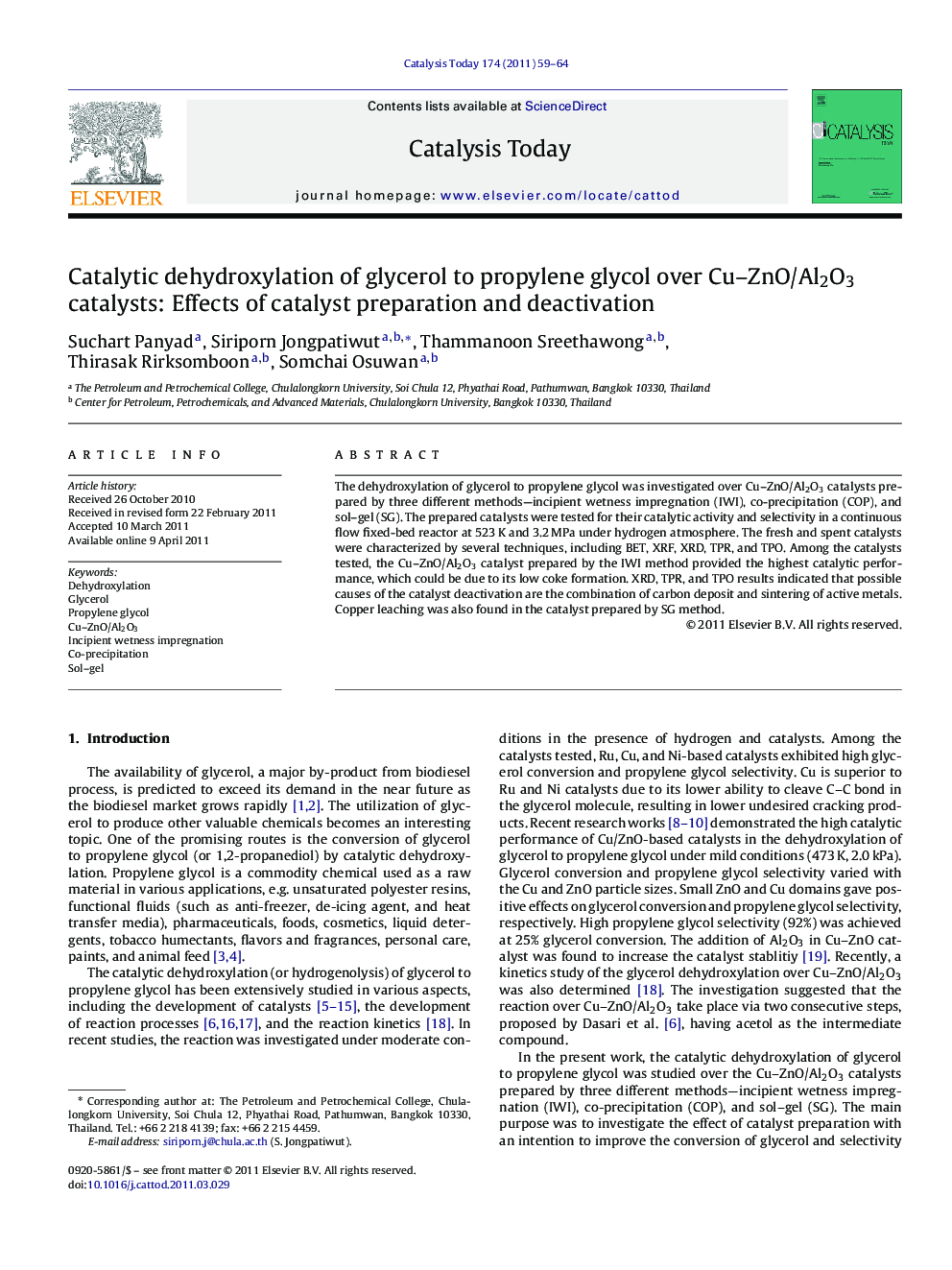| کد مقاله | کد نشریه | سال انتشار | مقاله انگلیسی | نسخه تمام متن |
|---|---|---|---|---|
| 55906 | 47065 | 2011 | 6 صفحه PDF | دانلود رایگان |

The dehydroxylation of glycerol to propylene glycol was investigated over Cu–ZnO/Al2O3 catalysts prepared by three different methods—incipient wetness impregnation (IWI), co-precipitation (COP), and sol–gel (SG). The prepared catalysts were tested for their catalytic activity and selectivity in a continuous flow fixed-bed reactor at 523 K and 3.2 MPa under hydrogen atmosphere. The fresh and spent catalysts were characterized by several techniques, including BET, XRF, XRD, TPR, and TPO. Among the catalysts tested, the Cu–ZnO/Al2O3 catalyst prepared by the IWI method provided the highest catalytic performance, which could be due to its low coke formation. XRD, TPR, and TPO results indicated that possible causes of the catalyst deactivation are the combination of carbon deposit and sintering of active metals. Copper leaching was also found in the catalyst prepared by SG method.
Figure optionsDownload high-quality image (113 K)Download as PowerPoint slideHighlights
► The Cu–ZnO/Al2O3 catalyst prepared by incipient wetness impregnation (IWI) gives the highest catalytic activity and stability compared to the ones prepared by co-precipitation (COP) and sol–gel (SG) methods.
► Possible causes of the catalyst deactivation are coke formation and metal sintering.
► As compared to IWI and COP catalysts, Cu leaching is clearly observed on the SG catalyst.
Journal: Catalysis Today - Volume 174, Issue 1, 2 October 2011, Pages 59–64